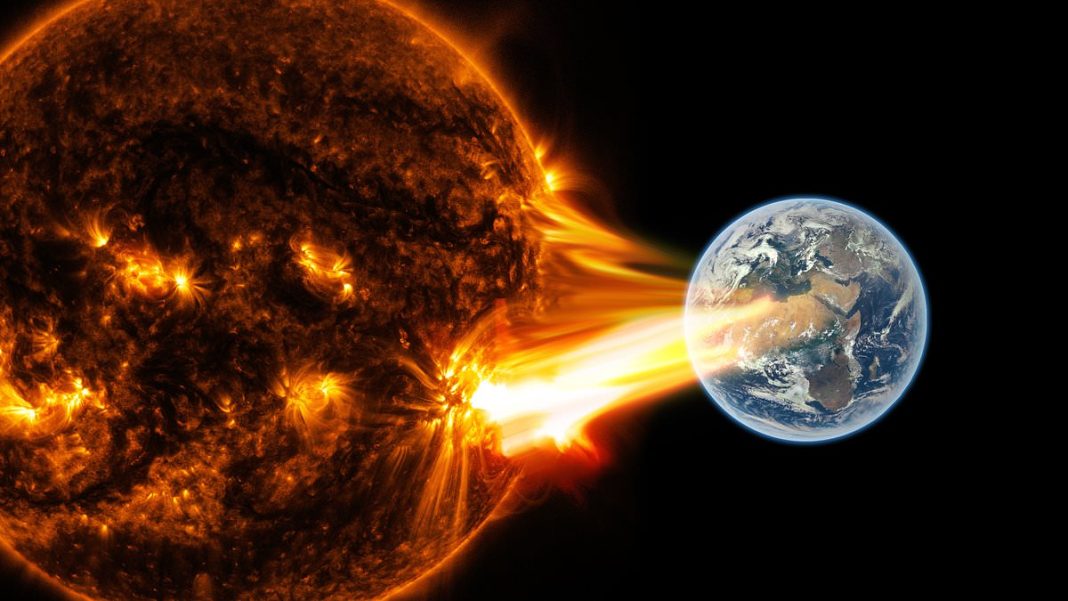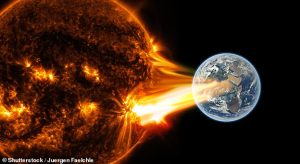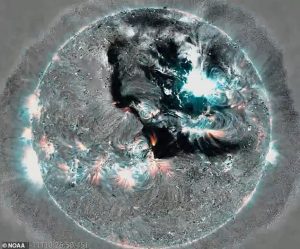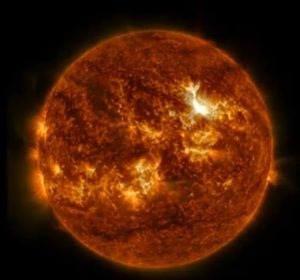Key Takeaways
- A severe G4-class geomagnetic storm is expected to hit Earth on Wednesday.
- Potential impacts include power grid disruptions, satellite issues, GPS interference, and radio blackouts.
- The storm is caused by a rare ‘Cannibal CME’ formed by two solar eruptions merging.
- Auroras may be visible as far south as the northern US and central Europe.
Earth is facing a severe geomagnetic storm on Wednesday, triggered by powerful solar eruptions. The US Space Weather Prediction Center (SWPC) issued a G4-level alert—the second-highest category—warning of potential disruptions to power grids, satellites, and communication systems.
What is a G4 Geomagnetic Storm?
A G4 storm can cause widespread technological impacts. The SWPC stated that some electrical grids may experience temporary shutdowns, spacecraft could face increased drag, and high-frequency radio signals may black out for hours. Mobile networks might also suffer from slower service, dropped calls, or temporary coverage loss in some areas.
‘Detrimental impacts to some of our critical technology are possible, but mitigation is possible,’ the SWPC advised. They urged the public to stay informed through official channels.
The ‘Cannibal CME’ Phenomenon
The storm is driven by coronal mass ejections (CMEs)—massive bursts of solar plasma. Two powerful CMEs are racing toward Earth, with a faster one expected to overtake an earlier eruption, forming a ‘Cannibal CME.’ This merger creates a massive shock wave that amplifies geomagnetic effects.
Tony Phillips of spaceweather.com explained: ‘Strong geomagnetic storms are possible on Nov. 12th when two CMEs are expected to hit Earth’s magnetic field. In fact, the two storm clouds could merge to form a potent ‘Cannibal CME.” He noted that the last such event on April 15, 2025, caused a severe G4 storm with auroras sighted in France.
Recent Solar Activity and Impacts
The sun released its largest solar flare of 2025 early Tuesday, causing a radio blackout across Europe and Africa. This affected aviation, maritime, emergency services, GPS, and satellite communications.
Space scientist Steph Yardley described the event as ‘not very common,’ noting only 75 such occurrences have been recorded since 1942. The flare originated from the highly active sunspot AR4274, which also produced significant flares on November 9 and 10.
Ongoing Risks and Radiation Alerts
Officials have issued radiation alerts as high-energy particles from the sun continue to pose risks. Passengers and crew on high-altitude polar flights may face increased exposure, while satellites in low-Earth orbit are vulnerable to electrical disruptions.
Solar activity remains high, with a 75% chance of more medium-class flares and a 40% chance of another powerful X-class flare. Another sunspot, AR4276, could also produce smaller flares with minor effects.







